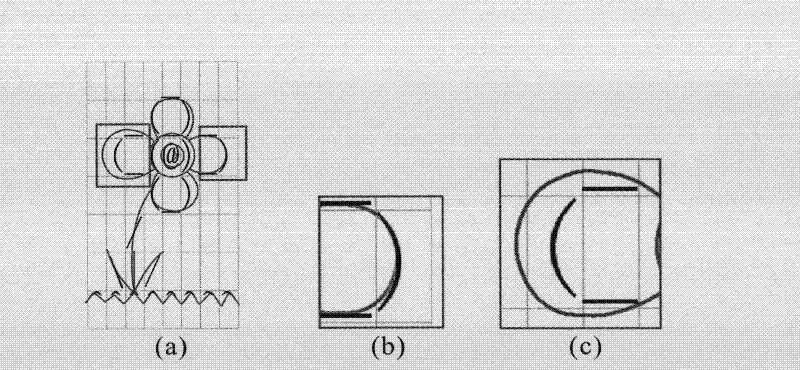Method and apparatus for generating structure-based ascii pictures
A technology of pictures and equipment, applied in the direction of image data processing, graphics and image conversion, editing/combining graphics or text, etc., can solve problems such as inapplicability
- Summary
- Abstract
- Description
- Claims
- Application Information
AI Technical Summary
Problems solved by technology
Method used
Image
Examples
Embodiment approach 1
[0025] refer to image 3 , the method 300 for generating an ASCII picture according to the first embodiment of the present application includes the following steps. In step 301, the input vector contour map is rasterized and divided into a plurality of grid units. At step 302, the image content in each grid cell is matched with an ASCII character using a non-exact alignment based shape similarity measure. Then, in step 303, the matched ASCII characters are collected together to generate an ASCII picture. In this method, the image to be processed may be a vector contour image containing only polylines. For other images such as photos, it can be converted into a contour map using known simple edge detection methods or advanced line drawing generation methods, and then vectorized into a vector contour map. For example, Figure 4 The image 401 shown in can be converted and vectorized into a corresponding vector contour map 402 . The steps of rasterization and character matchi...
Embodiment approach 2
[0041] According to the second embodiment of the present application, the reference image is slightly deformed to improve the chance of matching suitable characters.
[0042] Figure 9 is a flowchart of a method 900 according to the second embodiment. In step 901, an ASCII image has been generated based on the input vector contour image. This step can be implemented according to steps 301-303 in the first embodiment described above. It can be understood that the shape dissimilarity between each grid cell of the vector contour image and the matching ASCII character in the ASCII result image can be obtained in step 901 . Then, in step 902, the average shape dissimilarity between the vector contour map and the ASCII result picture is obtained by dividing the total shape dissimilarity by the number of non-empty grid cells. In step 903, the vector contour map is slightly deformed. For example, such deformations can be achieved by iteratively adjusting the position of the vertic...
Embodiment approach 3
[0047] However, in the second embodiment described above, unconstrained deformation may destroy the overall structure of the input picture. In this case, a third embodiment is proposed to quantify the degree of deformation and select the least deformed ASCII picture accordingly.
[0048] In this embodiment, the deformation degree of the vector image and the degree of dissimilarity between the character and the deformed image are taken into consideration. The flowchart of the method 1000 according to the third embodiment is as follows Figure 10 shown. The third embodiment is very similar to the second embodiment, except step 1006 and step 1007 . In step 1006, a local deformation degree associated with each line segment in the deformed vector contour map is calculated. In step 1007, an objective function will be calculated based on the shape dissimilarity and local deformation. These two steps will be explained in detail below. Furthermore, in this scheme, the shape dissim...
PUM
 Login to View More
Login to View More Abstract
Description
Claims
Application Information
 Login to View More
Login to View More - R&D Engineer
- R&D Manager
- IP Professional
- Industry Leading Data Capabilities
- Powerful AI technology
- Patent DNA Extraction
Browse by: Latest US Patents, China's latest patents, Technical Efficacy Thesaurus, Application Domain, Technology Topic, Popular Technical Reports.
© 2024 PatSnap. All rights reserved.Legal|Privacy policy|Modern Slavery Act Transparency Statement|Sitemap|About US| Contact US: help@patsnap.com










